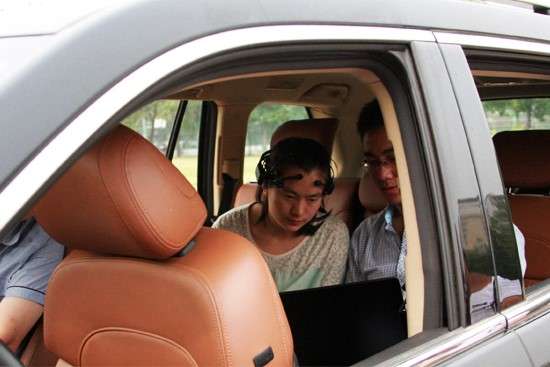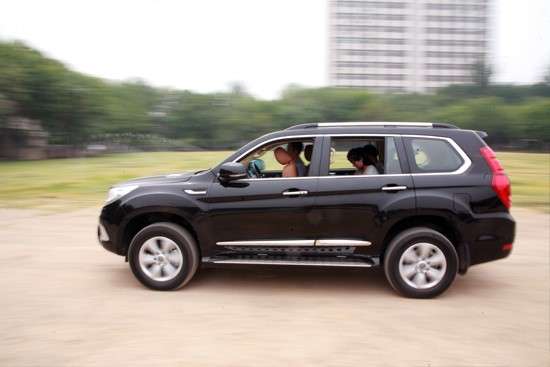December 9, 2015 weblog
Nankai University team shows car that moves by mind control

A car which is powered by your brain has been presented by researchers in China. Yes, it is a mind-controlled vehicle. And it uses nothing but brain power to stay in motion. With special equipment, a driver can go forward, backwards, stop, and lock and unlock the vehicle.
Reuters had a report on Monday about the car, which was two years in the making. The team is from Nankai University, Tianjin.
The car has brain signal-reading equipment. It carries 16 sensors that capture EEG (electroencephalogram) signals from the driver's brain.
Reuters said "a computer program selects the relevant signals and translates them, enabling control of the car."
Researcher Zhang Zhao told Reuters how it works: "The tester's EEG signals are picked up by this (brain signal-reading) equipment and transmitted wirelessly to the computer. The computer processes the signals to categorize and recognize people's intention, then translates them into control command to the car. The core of the whole flow is to process the EEG signals, which is done on the computer," said Zhang.
JC Torres of SlashGear had this to say: "The application of direct brain control to driving is a two-edged sword. On the one hand, removing the delay between brain to muscle movement, which sometimes can be erroneous, could actually lead to better driver safety. On the other hand, given how easily drivers can be distracted even while their hands are on the wheel, the idea is understandably frightening to some."
Associate Professor Duan Feng, from the university's College of Computer and Control Engineering, led the project. The researchers said their initial idea was inspired by helping disabled people who are physically unable to steer cars.

"There are two starting points of this project. The first one is to provide a driving method without using hands or feet for the disabled who are unable to move freely; and secondly, to provide healthy people with a new and more intellectualized driving mode," Zhang said.
Would this kind of project trigger a change in the "hand and feet" driving mode? At present the vehicle, in collaboration with Chinese car manufacturer Great Wall Motor, can only drive in a straight direction and there are no plans to put it into production. But Zhang hopes to continue the research, according to a video on the Reuters site.
Interestingly, in June last year, BBC Future reported on a car in Germany steered with thought alone. Henrik Matzke with hands on his lap drove a car using his thoughts alone. He was part of a team at the Free University of Berlin working on the Brain Driver project.
Brain Driver was to build a system that someone with a physical disability can use to manoeuver– as well as cars, the team had developed the technology for wheelchairs too.
The Brain Driver system also consisted of a headset with 16 sensors monitoring electrical signals from the brain. The BBC Future report described some limitations. "Right now, the instructions are binary – there's no way to make a slight left, or a slight right. Nor is there a way to control the speed moving forward. You also need to maintain total focus and relaxation while driving."
Rose Eveleth, who wrote the BBC Future report, said nobody was ready yet to release brain-powered cars onto the roads. "Before that can happen, they need an easier system to use and more robust algorithms that can jump in when a driver gets distracted or confused."
More information: english.nankai.edu.cn/73/ea/c144a29674/page.htm
© 2015 Tech Xplore


















